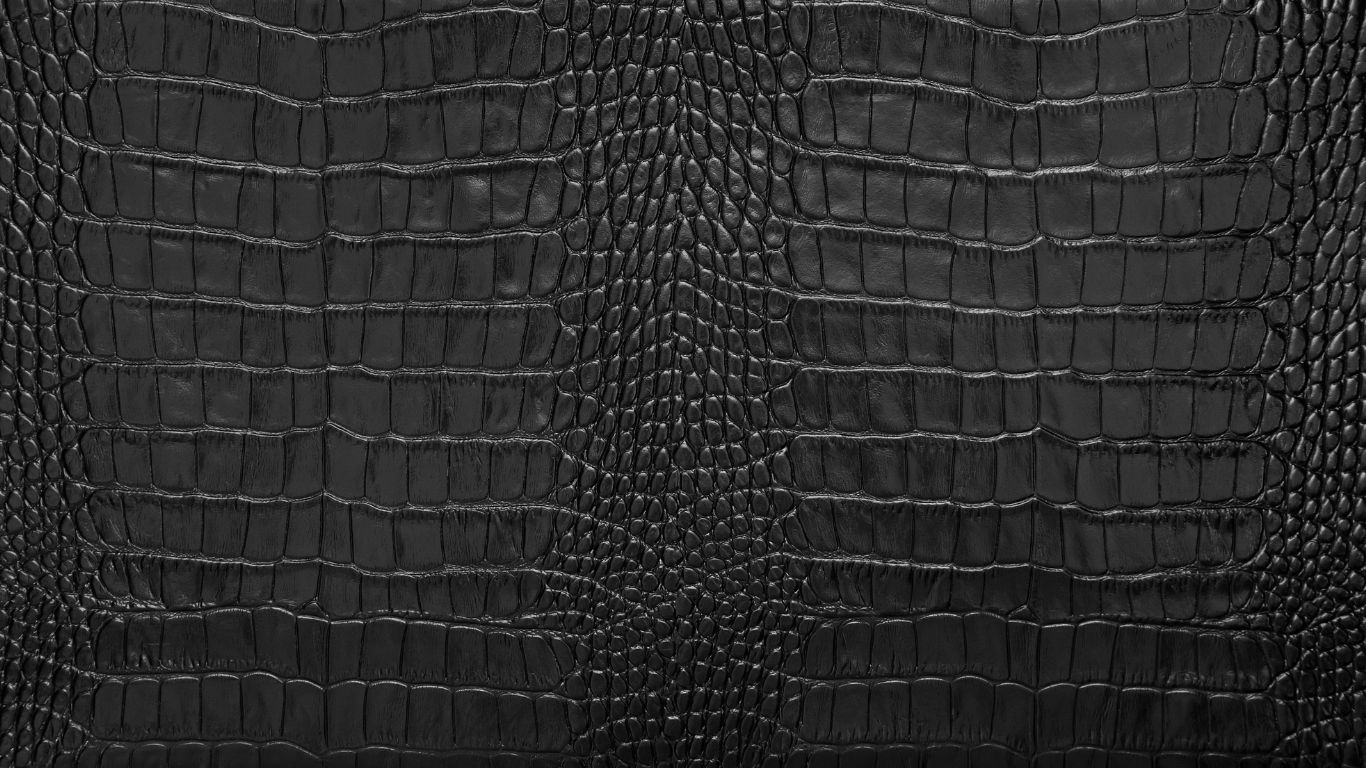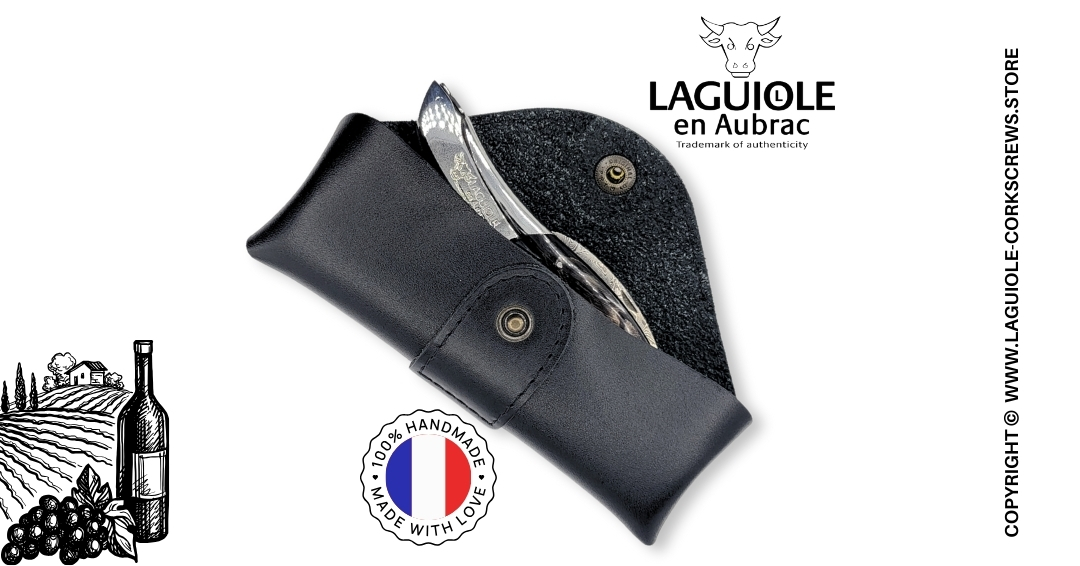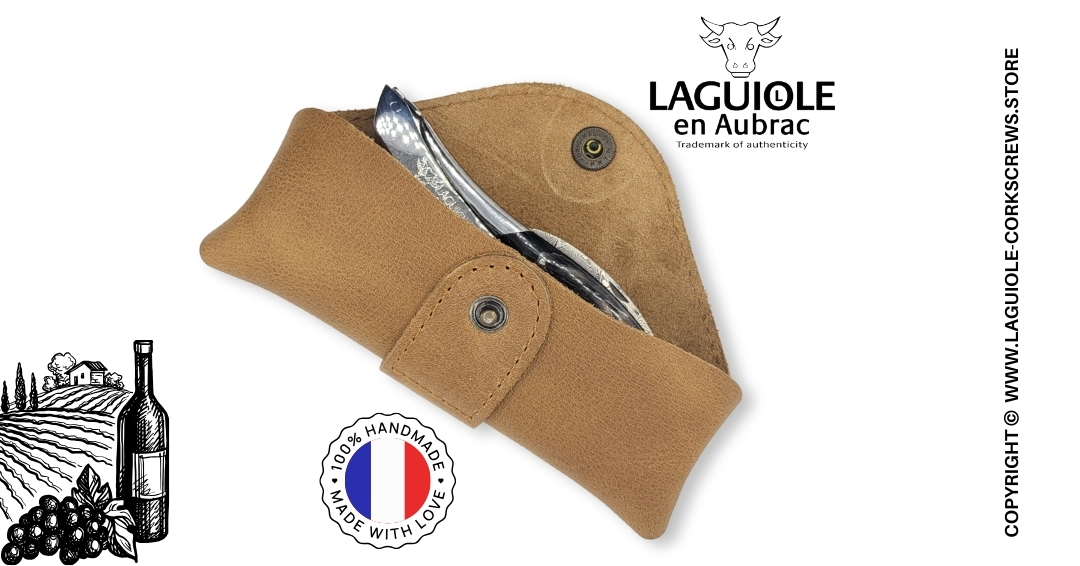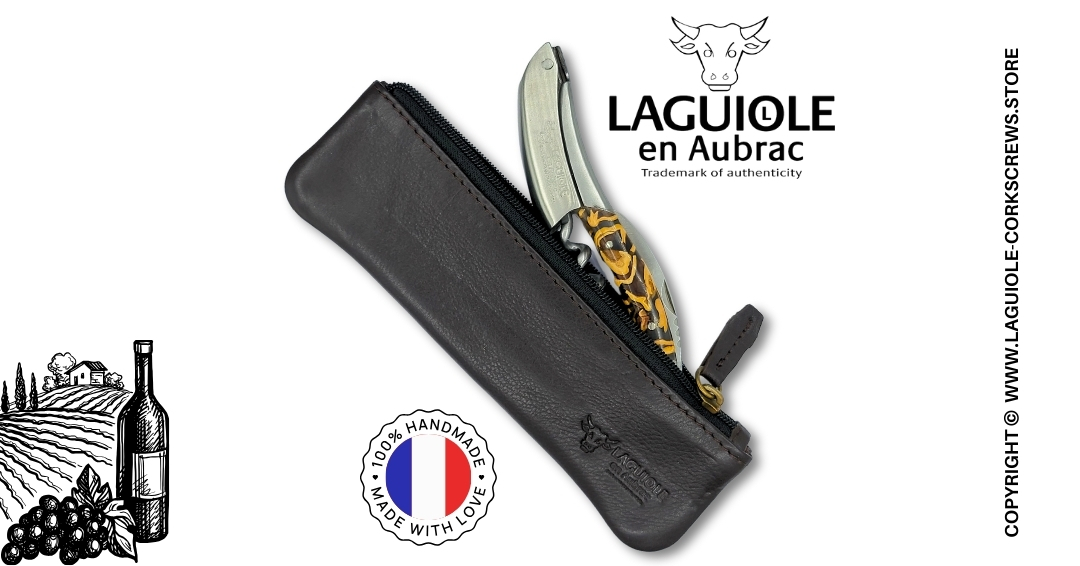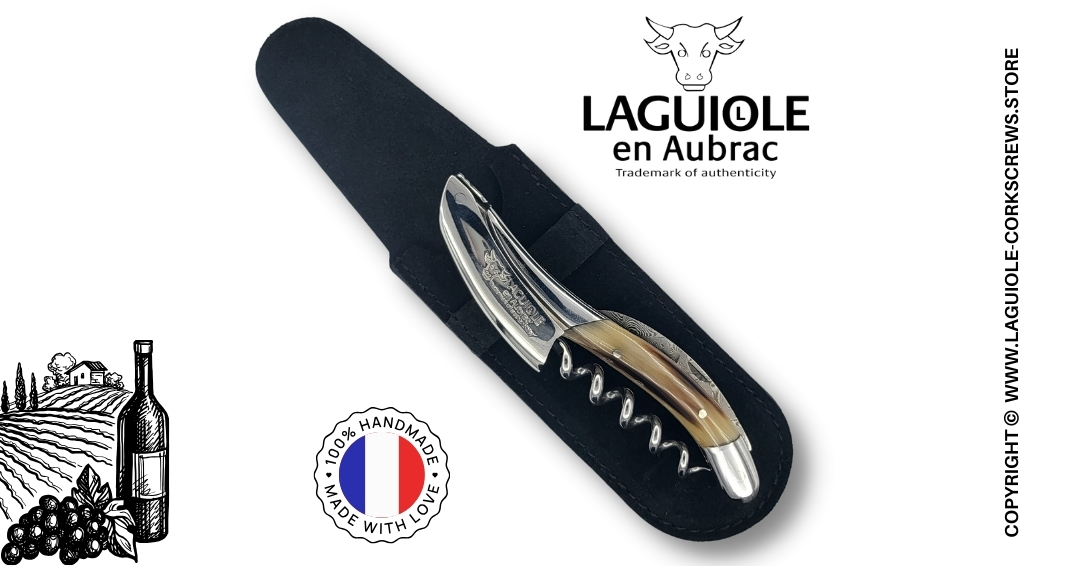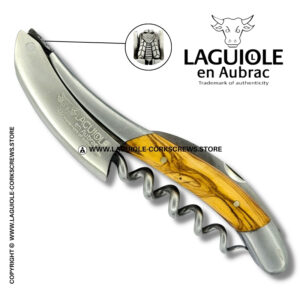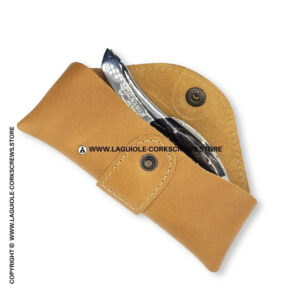Why Storage Matters More Than You Think
Your wine opener isn’t just a tool — it’s an object of craftsmanship. Made by hand, with forged components and noble materials like olivewood, horn, or stabilized burl, each Laguiole en Aubrac corkscrew deserves care that matches its quality.
Improper storage can lead to scratches, corrosion, or even damage to the blade or worm. Over time, repeated exposure to moisture, dust, or friction can alter both function and appearance. Fortunately, with a few simple steps, you can protect your corkscrew and preserve its elegance and performance.
Use a Dedicated Corkscrew Case
The most effective way to protect your Laguiole corkscrew is to keep it in a pouch or case when not in use. Our leather sheaths are designed to fit the contours of the tool perfectly, preventing scratches and exposure to air or moisture. They are compact, tactile, and often include a magnetic closure or stitched flap to secure the corkscrew safely.
Cases are especially important if your corkscrew is stored in a drawer or taken on the go. The metal parts (blade, worm, lever) can get dulled or bent if left loose among other utensils. A leather pouch adds a layer of elegance and makes your corkscrew travel-ready — whether for a picnic or a professional tasting.
→ Internal link: Explore our corkscrew cases and accessories
Keep It in a Dry Place
Humidity is one of the main risks to the longevity of your wine opener. Even stainless steel, while corrosion-resistant, can react to extended exposure to moisture — especially around the screw mechanism or folding axis.
After using your corkscrew, wipe it with a dry cloth. Avoid leaving it on a wet counter or near a sink. If your corkscrew has a wooden or horn handle, avoid long exposure to damp air or sealed plastic containers, which can cause warping or degradation.
Recommended places to store your corkscrew include:
- A dry drawer lined with fabric
- Inside its leather pouch
- On a wooden tray or in a wine cellar box (as long as the humidity is controlled)
Clean It Properly After Use
Even with minimal use, wine and cork residues can build up on the worm or foil cutter. Cleaning is essential — but it must be done with care:
- Use a soft, dry cloth to wipe down the tool after every use
- If needed, slightly dampen the cloth for stubborn stains — then dry thoroughly
- Do not soak the corkscrew or wash it in the dishwasher
- Avoid abrasive materials or solvents that can affect the polish or engraving
→ Internal link: How to Maintain and Clean a Laguiole Corkscrew
Avoid Leaving It on the Table After Opening
During tastings or meals, many people leave their wine opener on the table, near a wet bottle or glass. Over time, this habit can cause stains on the blade or worm, especially if wine drips onto the steel and isn’t wiped off immediately.
Once you’ve opened the bottle, return the corkscrew to its case or to a dedicated napkin — just like you would with a fine knife. This small gesture preserves the tool’s finish and protects the blade’s edge and the worm’s tip.

If Storing for the Long Term…
Sometimes you’ll set the corkscrew aside between seasons, or store a collectible model for future gifting. In this case:
- Wrap it in a soft, lint-free cloth (preferably cotton or microfiber)
- Place it in a rigid box or drawer away from sunlight and humidity
- Check it every few months to ensure no signs of oxidation or dryness (especially for horn or wood handles)
Never store the corkscrew in sealed plastic or a damp leather pouch for extended periods. Natural materials need air circulation to stay stable.
Respect the Handle Material
The handle of your Laguiole corkscrew is unique — whether in juniper, ebony, pistachio wood, or buffalo horn. Each material reacts differently to temperature and humidity changes. Wood may expand or shrink slightly. Horn may become dull if exposed to strong sunlight or dry air.
If the handle seems dry or faded, you can revive its sheen with a small drop of neutral wood balm or beeswax, applied with a cloth. Do not use oils, varnishes, or alcohol-based products. Keep the treatment minimal — the natural material should remain visible and breathable.
Store It Like an Object of Value
A Laguiole en Aubrac corkscrew is more than a wine tool. It’s an object of tradition, precision, and emotion. Many owners say they store it the way they store their watches or fountain pens — with intention. That mindset helps keep the corkscrew both functional and beautiful for decades.
If you’ve engraved the corkscrew with initials or a date, it becomes even more valuable. Storing it properly shows that the gesture meant something. It also keeps the engraving crisp and visible for generations to come.
→ Internal link: Explore engraved Laguiole corkscrews
Common Mistakes to Avoid
Even experienced wine lovers sometimes damage their corkscrews through minor oversights. Here are some mistakes to avoid:
- Storing it wet: Always dry thoroughly after use to prevent oxidation and wood swelling.
- Forgetting the case: A drawer filled with cutlery can easily scratch the finish or dull the blade.
- Using harsh cleaners: Metal polish or abrasives can remove engraving or dull the satin finish.
- Leaving it open: An open blade or worm can bend over time or injure someone during storage.
Travel and On-the-Go Use
If you’re traveling — whether for a wine tour, a countryside picnic, or a professional tasting — your corkscrew deserves the same care as your best bottle. Laguiole corkscrews fit easily into luggage or wine carrier sets, especially when stored in a form-fitted pouch.
For safety, always fold the worm and blade back fully before placing the corkscrew in your bag. Never transport it loose among bottles or glassware. And don’t forget: sommelier corkscrews are not allowed in carry-on luggage on flights — only in checked bags.
A leather pouch adds sophistication and security for sommeliers and enthusiasts on the move.
For Collectors: How to Store Prestige Models
If you own one of our premium corkscrews — with chiseled liners, sage leaf engraving, Damascus steel, or mammoth ivory — proper storage becomes a matter of preservation. These are pieces that are as collectible as they are functional.
Store these in a lined case or box with foam padding, away from heat and UV light. Avoid exposing rare materials like ivory or horn to rapid temperature changes. Once or twice a year, open and inspect the tool to verify that all components remain clean, smooth, and intact.
These pieces are often given as legacy gifts — storing them with care ensures their story continues. (→ what makes laguiole en aubrac corkscrew collectible)
Conclusion
Protecting your Laguiole corkscrew doesn’t require complicated care. It simply requires attention — and the right accessories. A leather sheath, a soft cloth, a dry drawer… These small details preserve the craftsmanship, balance, and beauty of the tool.
By storing it correctly, you ensure that your wine opener is always ready — not just for the next bottle, but for the next memory. Because with a Laguiole en Aubrac corkscrew, every opening is more than a gesture. It’s a ritual worth respecting.
→ Discover the full collection: Laguiole en Aubrac Corkscrews

